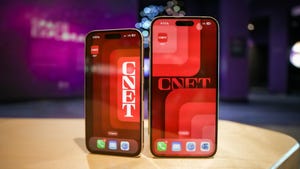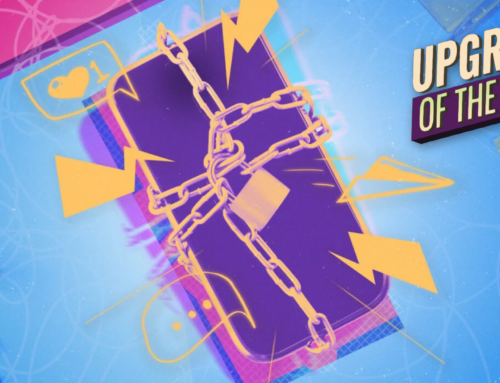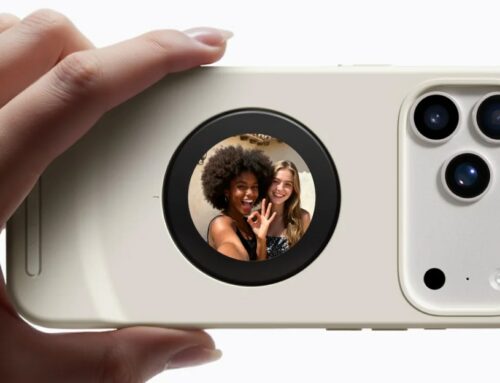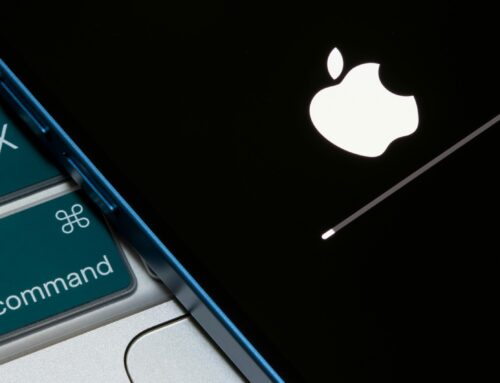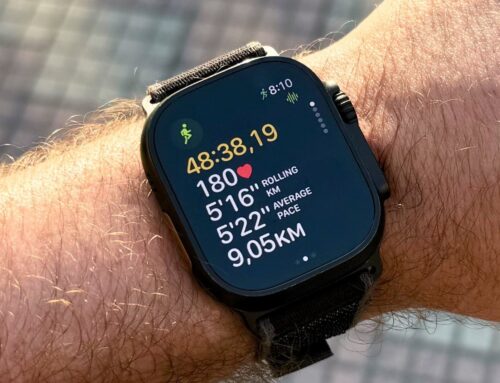The iPhone 15 is a leap forward compared with older iPhones, but it can still be difficult to decide whether it’s worth upgrading.
After using the iPhone 15 for the past couple of weeks as my primary phone, I can say it feels like a big step up from my aging iPhone 12. Now that I’ve had more time with the iPhone 15, I’ve been able to further test the battery, performance and new features like Precision Finding, and my initial takeaways still hold true.
The addition of USB-C and the Dynamic Island make the iPhone 15 feel more convenient in a lot of ways. You no longer have to carry multiple cables to charge your phone and your non-Apple devices, and the Dynamic Island makes it easier to see time-sensitive information — like your Uber’s ETA — without flipping between apps. The new 48-megapixel camera also takes more detailed photos, and the iPhone 15’s fresh design has a matte finish that’s more resistant to fingerprint smudges.
While these changes come together in a way that makes the iPhone 15 feel truly new, iPhone 14 and iPhone 13 owners should hold off on upgrading. Both phones still have plenty of life left in them, so the differences in general performance and camera quality won’t feel as monumental as they would coming from an older phone.
Watch this: iPhone 15 Review: A Big Upgrade for Older iPhone Owners
If you are upgrading, be sure to see if you’re eligible for any carrier discounts. Some carriers are offering up to $1,000 off the prices of Apple’s new phones, although you have to meet very specific conditions to take full advantage of those discounts. That includes opening a new line of service, and carriers sometimes apply the payment as monthly credits rather than a lump sum.
Below, I compare the iPhone 15 to the last five generations of the standard iPhone. This doesn’t include comparisons to the Pro, which is intended for a more camera-centric audience that’s willing to pay a higher price for better zoom quality and other extras that may be too niche for the average consumer.
For more advice on how to decide which iPhone in Apple’s current lineup is right for you, check out CNET’s guide to the best iPhones. And if you’re eyeballing the iPhone 15 Pro, read our guide comparing it to previous generations of the iPhone Pro.
iPhone 15 vs. iPhone 14
The iPhone 14 is new enough that we recommend waiting before you upgrade.
James Martin/CNETThe iPhone 15 brings numerous upgrades over the iPhone 14, making it a larger leap than the jump from the iPhone 13 to the iPhone 14.
A new USB-C charging port replaces the Apple-specific Lightning connector, the main camera sensor has a significantly higher resolution, and the Dynamic Island sits where the notch used to be. Plus, you’ll get an upgrade to the same A16 Bionic processor found inside the iPhone 14 Pro, and the iPhone 15 has an eye-catching new design with a matte finish. The screen is also brighter compared to last year’s iPhone 14.
But since the iPhone 14 is only a year old, I’d recommend waiting before upgrading. While a universal USB-C charging port and the Dynamic Island certainly add more convenience to the iPhone, they’re not enough to convince most people to upgrade.
The new 48-megapixel camera is a step up from the 12-megapixel system on the iPhone 14, but the improvements will be more noticeable coming from a phone that’s more than two years old. If you primarily view and share photos on your phone rather than printing them or displaying them on a larger screen, the previous-generation 12-megapixel camera will do just fine.
The Dynamic Island, USB-C and the upgraded camera are the iPhone 15’s biggest changes. But for most people, these features likely aren’t enough to justify shelling out $799. Carrier deals may knock that price down significantly, but those discounts are often only available under certain conditions, such as adding a new line.
The bottom line: You can hang onto your iPhone 14 for now. While it’s great to see more dramatic upgrades than last year, the iPhone 14 still has plenty of life in it. That’s especially true if you have the iPhone 14 Pro. The iPhone 15 has a lot in common with the iPhone 14 Pro, and it lacks the Pro’s dedicated telephoto lens, always-on display, stainless steel body and high refresh rate.
iPhone 15 vs. iPhone 13
The iPhone 13 came out in 2021.
Patrick Holland/CNETThe iPhone 13 has a lot in common with the iPhone 14, from the A15 Bionic processor they share to the 12-megapixel camera system found on both phones. The biggest differences between the two devices are the iPhone 14’s car crash detection, satellite connectivity for emergency communications and subtle camera improvements, such as Apple’s improved image processing pipeline and Action mode for more stable video capture.
As such, the same general advice applies to iPhone 13 owners. While there’s a lot about the iPhone 15 that will feel new, such as the Dynamic Island, the 48-megapixel camera and USB-C connectivity, those changes likely don’t justify a $799 upgrade if you’re currently happy with your device. The fact that Apple still sells the iPhone 13 is also a good sign, indicating that it will be supported with new software updates for a while.
The bottom line: If you have an iPhone 13, you can probably wait another year before upgrading. While you’ll have plenty to gain from the iPhone 15, your iPhone 13 is still likely in good condition. Unless you can essentially upgrade for free through a carrier trade-in deal, you can feel good about holding on to your iPhone 13.
iPhone 15 vs. iPhone 12
The iPhone 12 is probably due an upgrade now.
Sarah Tew/CNETIf you own an iPhone 12, the decision about whether you should upgrade is more complicated. Phones older than the iPhone 12 are a no-brainer upgrade, and newer models are worth hanging onto for a bit longer (unless you can snag a great trade-in deal). But the iPhone 12 falls in the middle. You can get more mileage out of it, but it’s also old enough to justify an upgrade.
Compared to the iPhone 12, the iPhone 15 has the Dynamic Island, a processor that’s two generations newer, a much-improved camera with a higher resolution main sensor, longer battery life, car crash detection, emergency SOS via satellite, a brighter screen, extra camera modes, double the storage at the base level and longer battery life. That’s a lot.
If you’re happy with your iPhone 12 and don’t want to part with it until you absolutely have to, that time hasn’t come just yet. Since the iPhone 12 supports 5G and is compatible with new software upgrades like iOS 17, you can hold onto it for a little while longer.
But if you bought your iPhone 12 at launch, it’s probably starting to feel sluggish and the battery life is likely starting to drain more quickly. As an iPhone 12 owner, I can say I’m experiencing those symptoms myself. The upgrades to general performance and camera quality are also very apparent when switching from the iPhone 12, as I wrote in my review. The amount of detail I was able to capture when shooting portraits on the iPhone 15 compared to the iPhone 12 was particularly noticeable.
The bottom line: It’s worth upgrading to the iPhone 15 if you have an iPhone 12. The updates go beyond new technologies like the Dynamic Island and USB-C; you also get a notable upgrade in everything from general performance to battery life and camera quality. However, if you don’t want to upgrade just yet, Apple still supports the iPhone 12 with new software updates.
iPhone 15 vs. iPhone 11
The iPhone 11 is getting pretty long in the tooth.
Angela Lang/CNETCalling the iPhone 15 a worthwhile upgrade coming from the iPhone 11 is an understatement. Beyond the iPhone 15’s new features, basic components like the processor, storage and battery have also come a long way since the iPhone 11 debuted in 2019. The iPhone 11 also lacks 5G support, meaning you may be missing out on faster data speeds.
Aside from the iPhone 15’s headlining features — such as the Dynamic Island and its 48-megapixel camera — just about every part of the iPhone experience should feel new and improved. The A13 chip inside the iPhone 11 is three generations old, meaning it might be starting to feel slow, and it only has half the number of neural cores compared to the iPhone 15. That means features relying on artificial intelligence and machine learning, such as language translation, voice dictation, photography and Face ID, are bound to feel faster and improved on the iPhone 15.
The iPhone 11 also has a dimmer LCD screen compared to the iPhone 15’s brighter OLED display, bringing better contrast. If you bought the cheapest iPhone 11 model, you also might be running out of storage space. The base iPhone 15 model comes with twice as much storage, starting at 128GB instead of the iPhone 11’s 64GB. Since the iPhone 12 was the first generation to support MagSafe, Apple’s magnetic system for attaching to accessories, you’ll also have the option to purchase accessories that snap onto the device more easily. The iPhone 11’s front camera also lacks night mode, which could be important to consider if you take group selfies at events that take place in dim environments, like a restaurant or theater.
These are finer details, but ones that have a big influence over how you use your phone when taken together. And keep in mind that these are just the features the iPhone 11 is missing compared to the iPhone 15. Factor in the iPhone 15’s new capabilities, such as its ability to capture higher resolution photos, its compatibility with USB-C charging cables and the more useful Dynamic Island that replaces the notch, and you’ve got a compelling upgrade.
The bottom line: The answer is a clear yes. If you have an iPhone 11, upgrading to the iPhone 15 will bring a bunch of improvements that make your phone more reliable and enjoyable to use. Just about everything will feel new on the iPhone 15 coming from the 4-year-old iPhone 11.
iPhone 15 vs. iPhone XS
The iPhone XS is old enough to attend kindergarten.
Angela Lang/CNETThe iPhone XS is five years old, and its age is showing. Upgrading to the iPhone 15 will not only mean getting access to new features, but you’ll also experience significantly longer battery life, a larger screen and 5G network speeds.
The iPhone XS has most of the same shortcomings as the iPhone 11, which includes the omission of 5G, no MagSafe support and an older, lower-resolution 12-megapixel camera. But on top of all that, the iPhone XS has a chip that’s four generations old, a 5.8-inch screen that’s smaller than the iPhone 15’s 6.1-inch display, a lower-resolution selfie camera (7 megapixels compared to 12 on the iPhone 15) and no night mode for taking photos in the dark.
The iPhone XS does have a dedicated telephoto camera, unlike the iPhone 15, which instead has an ultrawide lens as its secondary camera. But it’s a worthy sacrifice since you’ll be gaining all of the other camera upgrades Apple has added to the iPhone in recent years, which are sure to make a difference. If I noticed a major improvement coming from the iPhone 12, it’s safe to say the difference between the iPhone 15 and iPhone XS is bound to be significant.
Night mode is just the beginning. You’ll also get a major boost in general image quality thanks to the improved image processing that comes from Apple’s new chips, along with an ultrawide-angle camera for wider shots, Action mode for improved video stabilization, Cinematic mode, which records video with a shallow depth of field, and much more.
And that’s just the camera. General performance will likely seem faster, and battery life will last longer. On top of all that, you’ll also get the Dynamic Island and USB-C.
The iPhone XS generation is also the oldest iPhone to support iOS 17, meaning there’s a chance your phone won’t support next year’s upgrade. The same advice applies if you’re upgrading from the iPhone XR, which launched alongside the XS in 2018 and shares many of its characteristics, including the old A12 Bionic processor. The iPhone XR was essentially the budget version of the iPhone XS, seeing as it launched at a cheaper price and lacks the XS’ telephoto camera, OLED screen and stainless steel design.
The bottom line: Yes, it’s definitely worth upgrading if you have the iPhone XS or iPhone XR. Apple has upgraded the iPhone significantly in just about every way over the last five years.
iPhone 15 vs. Older iPhones
| iPhone 15 | iPhone 14 | iPhone 13 | iPhone 12 | iPhone 11 | iPhone XS | iPhone XR | |
|---|---|---|---|---|---|---|---|
| Display size, tech, resolution | 6.1-inch OLED; 2,556×1,179 pixels | 6.1-inch OLED; 2,532×1,170 pixels | 6.1-inch OLED; 2,532×1,170 pixels | 6.1-inch OLED; 2,532×1,170 pixels | 6.1-inch LCD Liquid Retina; 1,792×828 pixels | 5.8-inch Super Retina OLED; 2,436×1,125 pixels | 6.1-inch LCD Retina Display; 1,792×828 pixels |
| Pixel density | 460 ppi | 460 ppi | 460 ppi | 460ppi | 326ppi | 458 ppi | 326ppi |
| Dimensions (inches) | 2.82 x 5.81 x 0.31 in | 5.78 x 2.82 x 0.31 in | 5.78 x 2.82 x 0.3 in | 5.78 x 2.82 x 0.29 in | 5.94×2.98×0.33 in | 5.7×2.8×0.3 in | 5.9×3.0x0.33 in |
| Dimensions (millimeters) | 71.6 x 147.6 x 7.8 mm | 147 x 72 x 7.8 mm | 147 x 72 x 7.65 mm | 146.7 x 71.5 x 7.4 mm | 150.9×75.7×8.3 mm | 143.6×70.9×7.7 mm | 150.9×75.7×8.3 mm |
| Weight (grams, ounces) | 171 g (6.02 oz) | 172 g (6.07 oz) | 174 g (6.14 oz) | 164 g (5.78 oz) | 194 g (6.84 oz) | 177 g (6.2 oz) | 194 g (6.8 oz) |
| Mobile software (at launch) | iOS 17 | iOS 16 | iOS 15 | iOS 14 | iOS 13 | iOS 12 | iOS 12 |
| Camera | 48-megapixel (wide), 12-megapixel (ultrawide) | 12-megapixel (wide), 12-megapixel (ultrawide) | 12-megapixel (wide), 12-megapixel (ultrawide) | 12-megapixel (wide), 12-megapixel (ultrawide) | 12-megapixel (wide), 12-megapixel (ultrawide) | Dual 12-megapixel wide camera with telephoto lens | 12-megapixel |
| Front-facing camera | 12-megapixel | 12-megapixel | 12-megapixel | 12-megapixel | 12-megapixel | 7-megapixel | 7-megapixel |
| Video capture | 4K | 4K | 4K | 4K | 4K | 4K | 4K |
| Processor | A16 Bionic | Apple A15 Bionic | Apple A15 Bionic | Apple Bionic 14 | Apple A13 Bionic | Apple A12 Bionic | Apple A12 Bionic |
| Storage | 128GB, 256GB, 512GB | 128GB, 256GB, 512GB | 128GB, 256GB, 512GB | 64GB, 128GB, 256GB | 64GB, 128GB, 256GB | 64GB, 256GB, 512GB | 64GB, 128GB, 256GB |
| Expandable storage | None | None | None | None | None | None | None |
| Battery | Undisclosed; Apple claims up to 20 hours of video playback (16 hours streamed) | Undisclosed; Apple claims 20 hours of video playback | Undisclosed; Apple lists 19 hours of video playback | Undisclosed; Apple lists 15 hours of video playback | Not disclosed, but Apple claims it will last 1 hour longer than iPhone XR | Not disclosed, but Apple claims it will last 30 min. longer than iPhone X | Not disclosed, but Apple claims it will last 90 min. longer than iPhone 8 Plus |
| Fingerprint sensor | None (Face ID) | None (Face ID) | None (Face ID) | None (FaceID) | None (Face ID) | None (Face ID) | None (Face ID) |
| Connector | USB-C (USB 2.0) | Lightning | Lightning | Lightning | Lightning | Lightning | Lightning |
| Headphone jack | None | None | None | None | None | None | None |
| Special features | Dynamic Island; 5G (mmw/Sub6); MagSafe; water resistant (IP68); wireless charging; eSIM; satellite connectivity | 5G (mmw/Sub6); MagSafe; water resistant (IP68); wireless charging; eSIM; satellite connectivity | 5G; MagSafe; water resistant (IP68); wireless charging; dual-SIM capabilities (nano-SIM and e-SIM) | 5G; MagSafe; water resistant (IP68); wireless charging; dual-SIM capabilities (nano-SIM and e-SIM) | Water resistant (IP68); dual-SIM capabilities (nano-SIM and e-SIM); wireless charging | Water-resistant (IP68); dual-SIM capabilities (nano-SIM and e-SIM); wireless charging | Water-resistant: IP67, dual-SIM capabilities (nano-SIM and e-SIM); wireless charging |

